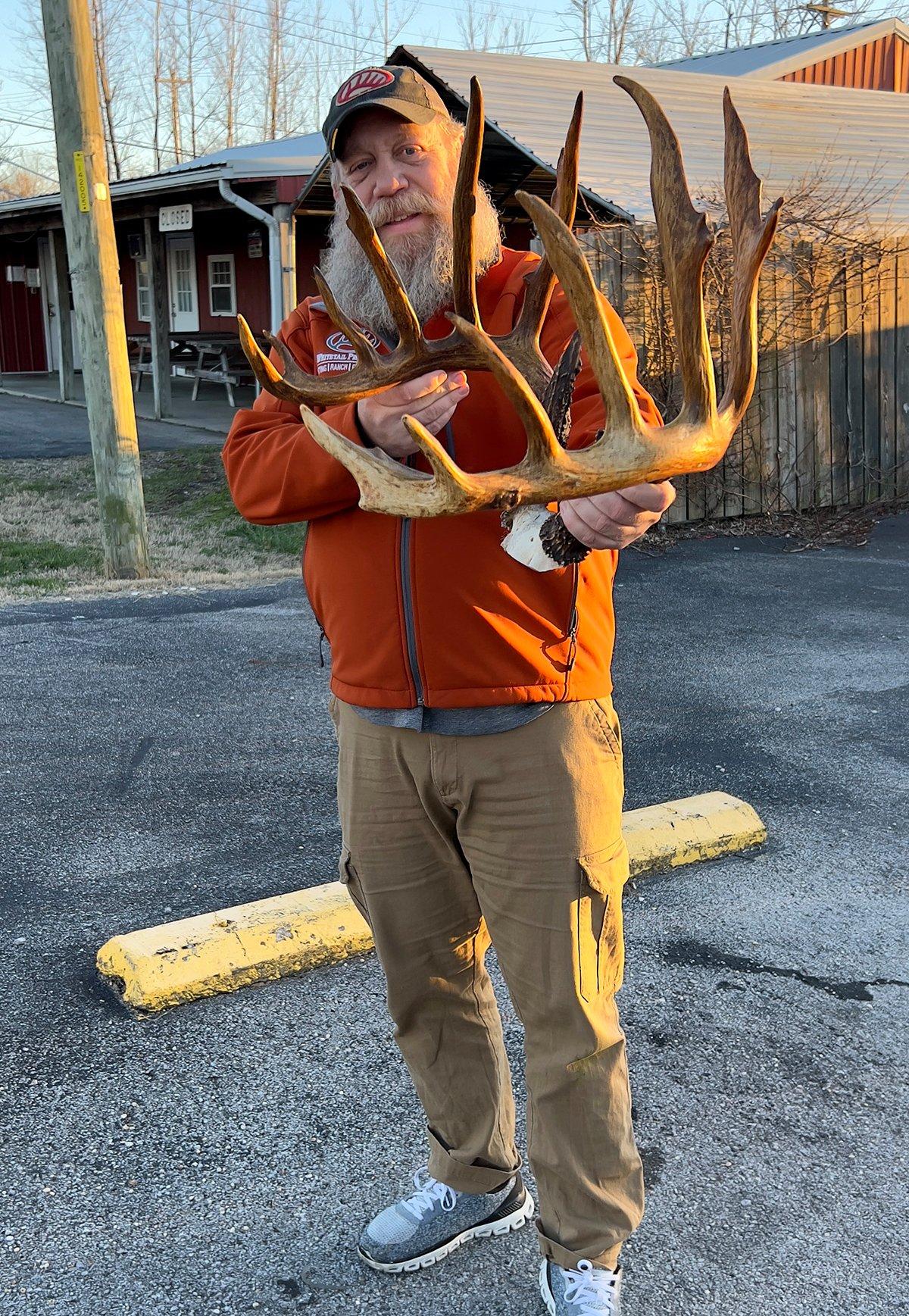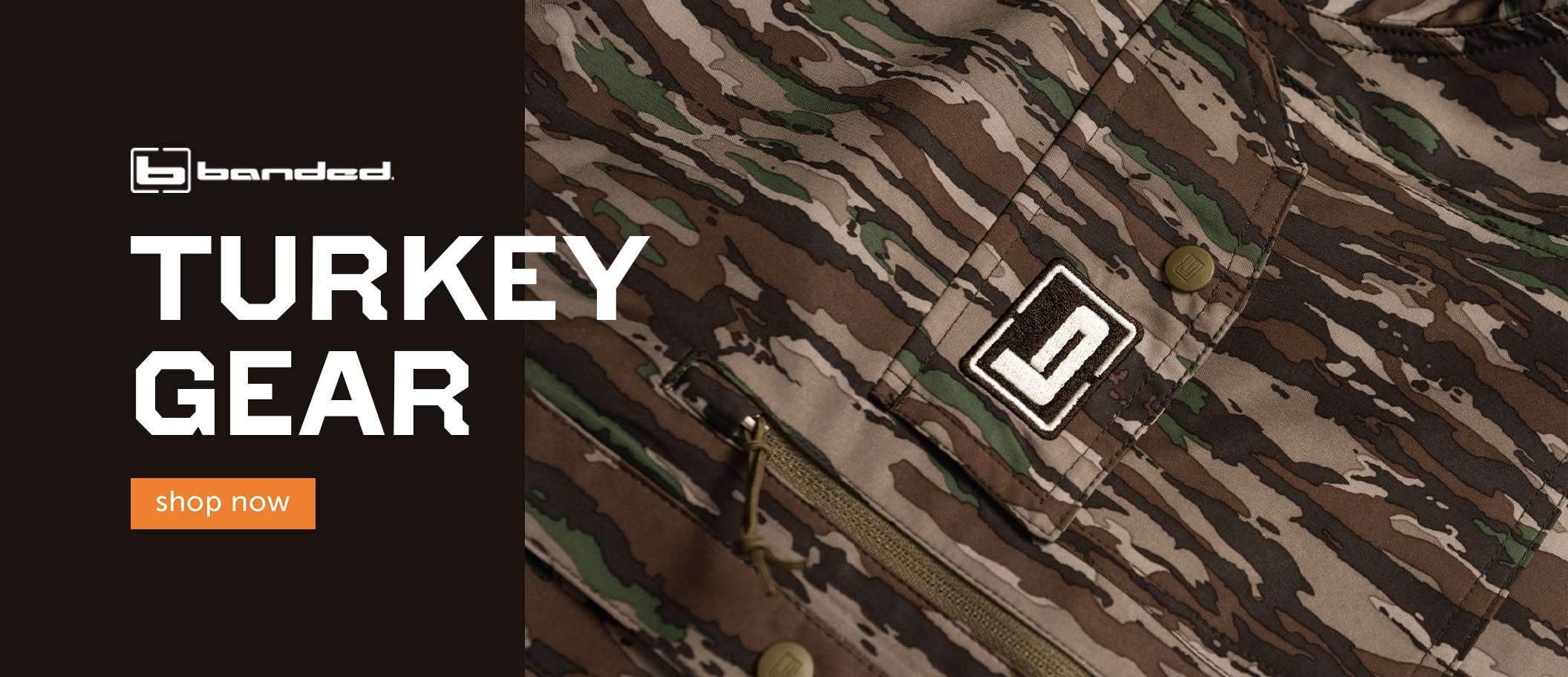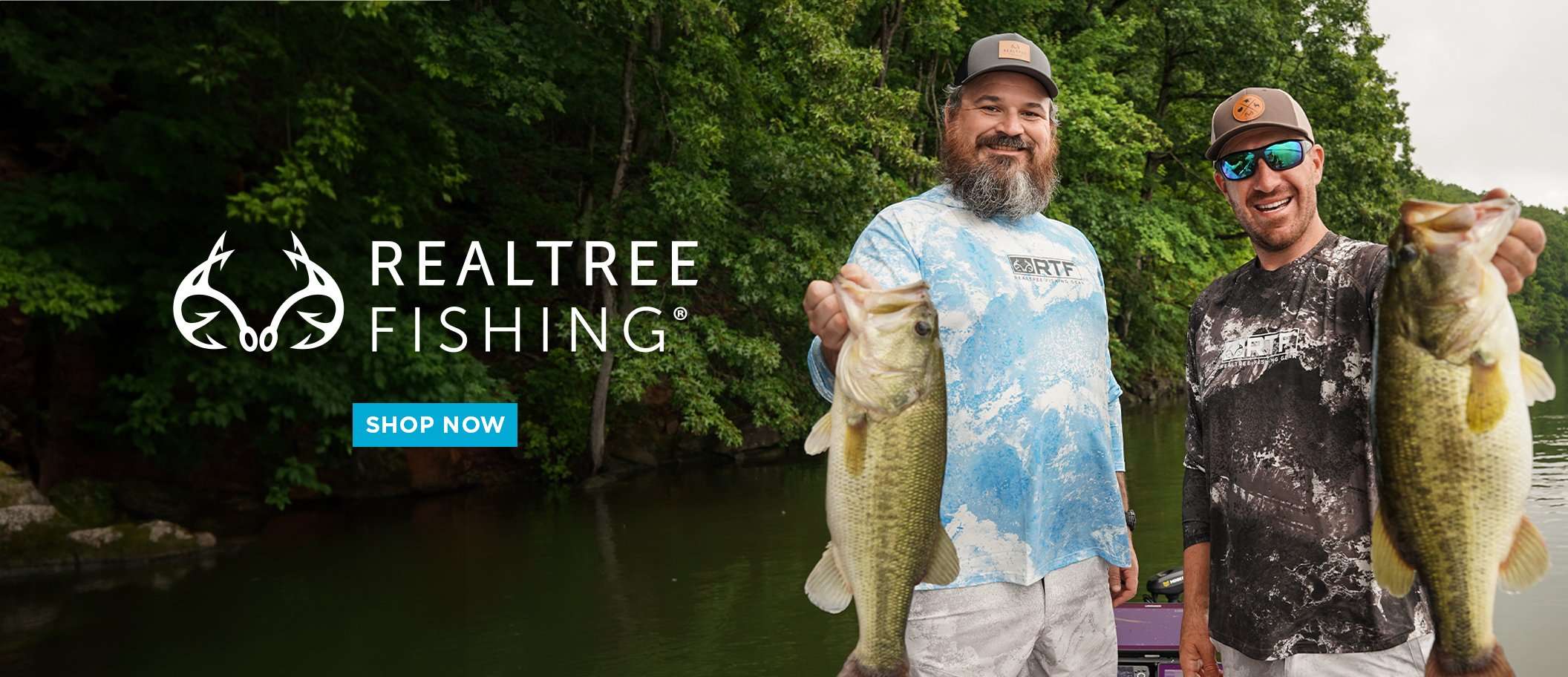Henry Poynter’s whitetail would’ve been a state record in 1958, and the mount was almost thrown away while cleaning an attic
A few months ago, we reported on a state-record Pennsylvania deer that was found tucked away in a garage for 60 years. It seems like other giant whitetail racks could be hidden in the shadows, collecting dust. A buck that would have been a Kentucky state record typical (at the time) was found in the house of a deceased woman’s attic. It’s been there since 1958.

At the time of harvest, and for 19 years after, Poytner’s buck would’ve been a state-record typical. Image courtesy of Dave Skinner
DUSTY OLD ANTLERS
That rack is now in the possession of Kentucky resident Dylan Chandler. “Four years ago, we were cleaning up my wife’s grandmother’s attic after she passed,” Chandler said. “Her family told me about this weird-looking deer in the attic that her great uncle had shot. We were cleaning it out, I peeked around the corner, and there it was.”
“What are you all going to do with that?” he asked the family.
“We’re going to throw it away; that thing is scary-looking,” they replied.
“No, you’re not,” he said.

Dave Skinner, an official scorer for Boone & Crockett and Pope & Young, scores the Poytner Buck. Image courtesy of Dave Skinner
Upon Chandler’s request, they transferred possession to him. He took it home, looked it over, and realized it was much bigger than he originally thought. He studied it further, and noticed it had a metal plate with information on it. According to that plate, in 1958, Henry Poynter shot the deer with a firearm somewhere in Metcalfe County, Kentucky.
Since discovering the deer, Chandler has been trying to find someone to score it. Eventually, he contacted Dave Skinner, who is a Whitetail Properties land agent, as well as a Boone & Crockett (B&C) and Pope and Young (P&Y) measurer.
“He’d been after me for about a year to score it,” Skinner said. “My schedule just doesn’t give me a lot of time. He told me it was a really good deer, but I hear that a lot. Finally, I told him to send me a picture of the deer. He sent it to me, and I about fell over.”
(Don’t Miss: When the Neighbor Kills Your Target Buck: Story of a Giant Georgia Drop-Tine)
Obviously, the deer is massive. But the mount was very old, falling apart, and quite primitive in terms of modern taxidermy standards. It wasn’t a shoulder mount. Rather, it started behind the jaw. The nose was taped up, too. Furthermore, the skull and jaw bones were still in it, which doesn’t happen with modern taxidermy. Because of this, Chandler was able to observe the teeth, and based on these, the deer wasn’t very old.
“Everything was in it,” Chandler said. “They wired the jaw shut and filled it with foam. And the teeth were huge. This was not an old deer, at all.”
The family doesn’t have additional details surrounding the harvesting of this deer. Unfortunately, the story of how it all played out is lost to time. All that Chandler knows is that Poynter was an avid hunter and shot some “good” deer.

Yes, this Kentucky buck, harvested in 1958, has it all. Image courtesy of Dave Skinner
A TRIP BACK IN TIME
Some hunters might ask, wasn’t Kentucky virtually void of deer in the mid 1900s? According to Richard Hines, a retired wildlife biologist with the Kentucky Department of Fish & Wildlife Resources (KDFWR), that is correct, which makes the story of this whitetail even more intriguing. At that time, the majority of the Bluegrass State didn’t have a strong deer population.
“Deer had been extirpated from most of the state,” Hines said. “The only place you could find deer in appreciable numbers was The Kentucky Woodlands National Wildlife Refuge, which is where the Land Between the Lakes is now.”
Hines reports that the Kentucky whitetail restoration effort was set to kick off in the 1930s, but World War II hindered that effort. With minimal staff, the large-scale project wasn’t possible. Eventually, in the late 1940s (most likely 1947-48), officials began trapping deer there and relocating them elsewhere in the state. They established 10 big-game refuges as designated whitetail restoration release sites in hopes of restoring whitetails to the entirety of the Bluegrass.
(Love big buck stories? Check out the Realtree Rack Report)
“One of those refuges was in Metcalfe County,” Hines said. “They chose it, and deer expanded from there. It might have been killed within what was once designated a refuge, or out in the county somewhere. But they would not have opened that season for a good number of years. It would have been on up in the 1950s. Those deer had close to 10 years before they were hunted.”
Hines was right. According to the Kentucky Department of Fish & Wildlife Resources, 1958 was the third season that modern gun deer hunting was allowed in Metcalfe County. So, Poynter’s buck’s legacy is not only historical in size, but also in the importance of bringing whitetails back to Kentucky.

What the buck lacks in mass is more than made up in number of tines, tine length, and beam length. Image courtesy of Dave Skinner
STILL A RECORD WHITETAIL
According to the B&C record book, 796 deer have been entered into the typical whitetail category. Meaning, that many deer that meet the 160-inch minimum threshold have been scored and officially recognized.
On the B&C scoring system, the Poynter buck gross-scores 200 2/8 inches. It netted 190 4/8 inches. Of course, the deer is well beyond the 60-day drying period and will be entered into the record book with this score. Once entered, the Poynter buck will be the No. 4 typical whitetail from Kentucky. It will be in a six-way tie for No. 163 in the world.
Despite impressive current rankings, what’s most interesting is where it would have placed at the time of harvest, and for many years thereafter. In 1958, the Poynter buck would have been the state record typical whitetail for Kentucky, and it would’ve held that title for 19 years, until 1977, when someone found a 191 3/8-inch buck dead in Meade County. Following that, it would have remained at No. 2 in the state until 2000, when Robert W. Smith killed the current state record typical, which scores 204 2/8 inches and came out of Pendleton County. Moreover, it would have remained at No. 3 until just last fall, when Joby Gossett shot his 200 3/8-inch Pulaski County deer.
(Don’t Kid Yourself: Weather and Moon Matter for Deer Hunting)
From a broader perspective, Poynter’s deer would have been the 17th-biggest typical buck in the world back in 1958. Analyzing the buck’s official scoresheet, several things pop out. First, this deer is a seven (right side) by eight (left side). The inside spread is 20 2/8 inches wide. More notably is all eight of its mass measurements are 4 6/8 inches, or less. Most deer that score this high have multiple mass measurements over 5 inches, if not greater. It just goes to show how long the buck’s main beams are (28 2/8 and 28 5/8 inches), and how many long tines this deer grew.
“You just don’t see that every day, especially around here,” Chandler said. “It’s unreal. I almost had a heart attack when they said they were going to throw it away. I don’t know what I would do if I saw it walking toward me in the woods.”
But if he does see one, and shoot it, hopefully it won’t end up hiding in an attic for the next 55 years.
(Editor’s Note: This story was originally published in March of 2023, and not long ago a reader pointed out to us that it had gone missing! Much like the mystery buck, we found it and reposted it in March of 2024.)












